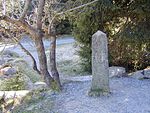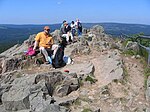Harz National Park

Harz National Park is a nature reserve in the German federal states of Lower Saxony and Saxony-Anhalt. It comprises portions of the western Harz mountain range, extending from Herzberg and Bad Lauterberg at the southern edge to Bad Harzburg and Ilsenburg on the northern slopes. 95% of the area is covered with forests, mainly with spruce and beech woods, including several bogs, granite rocks and creeks. The park is part of the Natura 2000 network of the European Union. In its current form, the park was created on January 1, 2006, by the merger of the Harz National Park in Lower Saxony, established in 1994, and the Upper Harz National Park in Saxony-Anhalt, established in 1990. As the former inner German border ran through the Harz, large parts of the range were prohibited areas, that apart from the fortifications had remained completely unaffected for decades. Today the park covers parts of the districts of Goslar, Göttingen and Harz. Rare animals of the Harz National Park include the white-throated dipper, the black stork, peregrine falcon, the European wildcat and especially the Eurasian lynx. The last lynx in the Harz Mountains had been shot in 1818, but in 1999 a project for reintroducing was established. Since 2002 several wild lynxes gave birth. An attempt to return the western capercaillie (Auerhuhn) however did not succeed.
Excerpt from the Wikipedia article Harz National Park (License: CC BY-SA 3.0, Authors, Images).Harz National Park
Schierker Straße, Harz (LK Goslar)
Geographical coordinates (GPS) Address Nearby Places Show on map
Geographical coordinates (GPS)
| Latitude | Longitude |
|---|---|
| N 51.783333333333 ° | E 10.566666666667 ° |
Address
Schierker Straße
38667 Harz (LK Goslar)
Lower Saxony, Germany
Open on Google Maps









